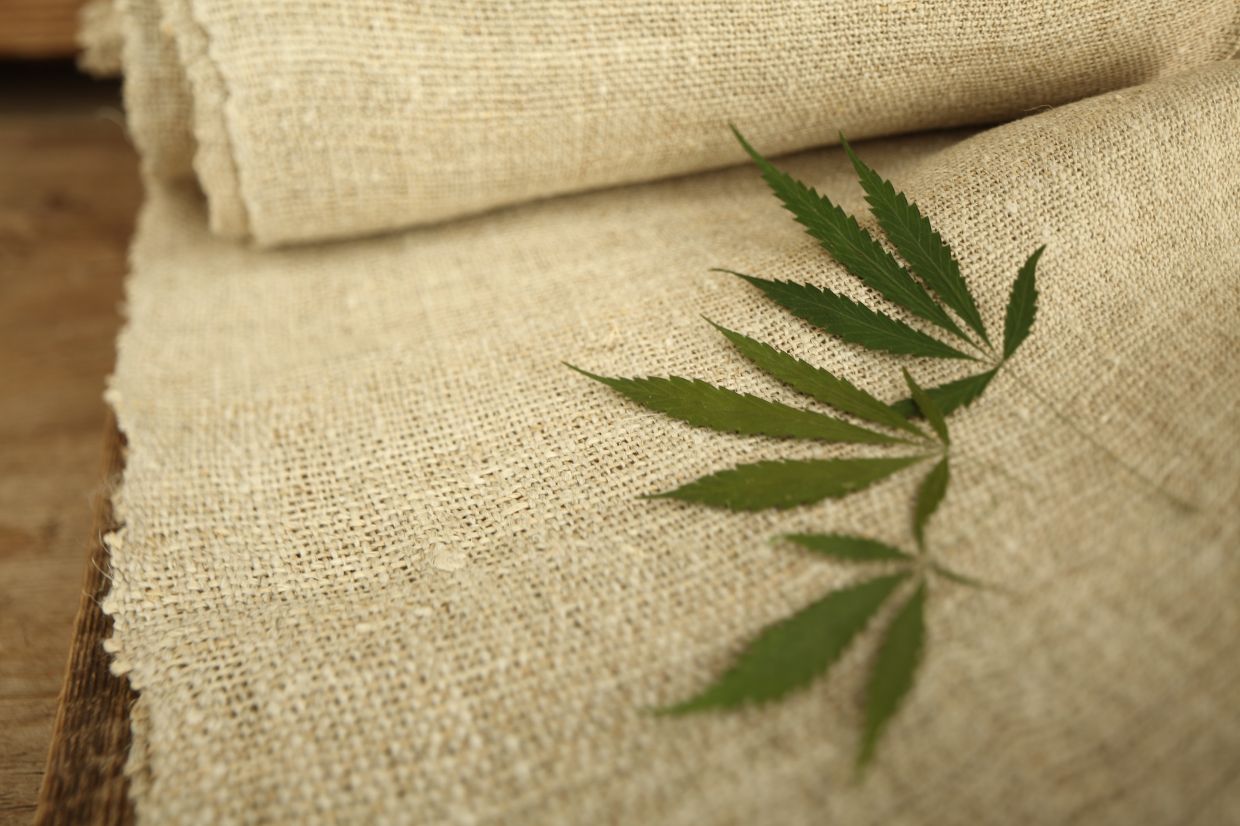You are here
Home 🌿 Cannabis Technology News 🌿 Hemp is becoming the fashionable alternative to conventional fabrics 🌿Hemp is becoming the fashionable alternative to conventional fabrics

Local, organically sourced and upcycled materials are now essentials for the fashion industry, which is trying to reinvent itself in order to reduce its impact on the environment.
Like linen, hemp is one of the fibres that could well take over our wardrobes in the months and years to come.
One need only take a look at the new collections of most ready-to-wear brands, including fast fashion giants, to realise that the textile industry is gradually turning to sustainable materials.
It includes organic for some, but also plant-based, and particularly materials whose cultivation requires less water, no or few pesticides, and, icing on the cake, can be done locally.
While linen seems to be getting its revenge on all the materials that have overshadowed it in recent decades, it's not the only one to be winning over fans in the fashion industry.
In addition to alternative "leathers" made from cactus, apple, grape, and mushroom, hemp is proving to be a fibre not to be overlooked in the move towards more eco-friendly fashion.
A sustainable alternative
Contrary to popular belief, hemp is anything but a new, innovative fibre. The textile industry has been using it for centuries, although for many years it pushed it to the side in favour of other materials until environmental issues changed the deal.
Because hemp, in all its forms (seeds, oil, fibres), represents a naturally sustainable alternative in many sectors, including food, cosmetics, and of course... fashion.
According to Mara Hoffman via the Council Of Fashion Designers Of America,"hemp is naturally resistant to pests, requires relatively little water, and grows quickly".
Hoffman adds: "Hemp is a 'sister plant', meaning it replenishes the soil for the crops around it and is ideal for crop rotation."
Which is its first good point. The plant is also drought resistant – so it requires less water to grow – is fast-growing, and its fibers are considered extremely strong.
All of which makes a person wonder why the industry has put it to the side for so long. The answer resides in the processing of hemp fibre, which is very complex and, by extension, more expensive than the processing of other fibres.
Which makes it easy to understand why the industry lost interest in it...
However, it's hoped that technological innovations observed in the sector in recent years will eventually reduce these costs, and the processing time, to make it a more accessible material.
The brand Bewusst Pure Hemp Wear offers collections for men and women in 100% hemp. Prices are around 165 euros (RM828) for jeans, 125 euros (RM627) for a sweater.
The HempAge label remains one of the best known in the field of hemp textiles, although most of the pieces offered generally mix hemp and organic cotton (or wool), which explains the more accessible prices.
Meanwhile Patagonia also offers a hemp line, while Levi's Wellthread collection includes "cottonised hemp".
While brands specialising in hemp textiles remain rare, there are on the other hand many multi-brand e-shops, often dedicated to fans of natural fibers such as linen, hemp, or bamboo. – AFP Relaxnews
420 Intel is Your Source for Marijuana News
420 Intel Canada is your leading news source for the Canadian cannabis industry. Get the latest updates on Canadian cannabis stocks and developments on how Canada continues to be a major player in the worldwide recreational and medical cannabis industry.
420 Intel Canada is the Canadian Industry news outlet that will keep you updated on how these Canadian developments in recreational and medical marijuana will impact the country and the world. Our commitment is to bring you the most important cannabis news stories from across Canada every day of the week.
Marijuana industry news is a constant endeavor with new developments each day. For marijuana news across the True North, 420 Intel Canada promises to bring you quality, Canadian, cannabis industry news.
You can get 420 Intel news delivered directly to your inbox by signing up for our daily marijuana news, ensuring you’re always kept up to date on the ever-changing cannabis industry. To stay even better informed about marijuana legalization news follow us on Twitter, Facebook and LinkedIn.




